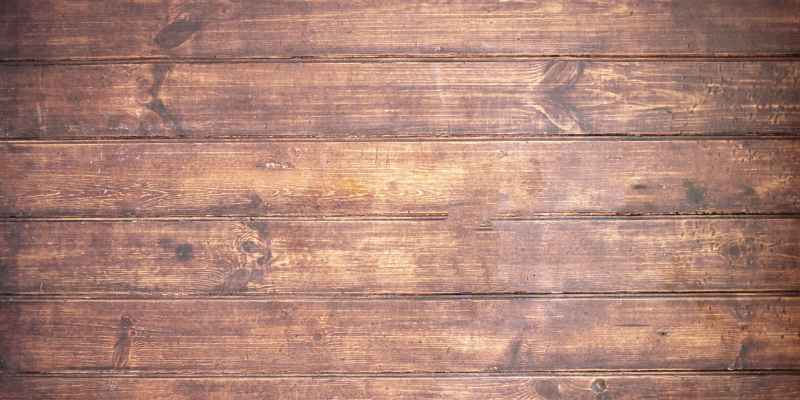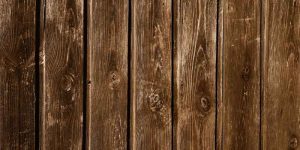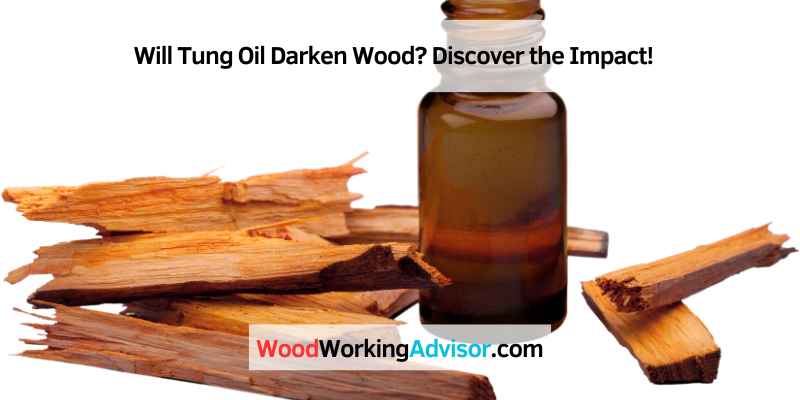Yes, Tung oil darkens wood over time due to its natural oxidizing properties. Tung oil enhances wood color.
Tung oil, a popular choice for wood finishing, not only provides a protective layer but also enhances the natural beauty of the wood. This oil penetrates deep into the wood, bringing out its rich tones and textures. As it cures, the wood darkens, creating a warm and lustrous finish that highlights the grain patterns.
Understanding how Tung oil affects the wood’s color can help you achieve the desired look for your furniture or woodworking projects. Let’s explore the process and effects of Tung oil on wood darkening in more detail.
Introduction To Tung Oil
If you’re looking for a natural, non-toxic wood finish that enhances the beauty of wood, then Tung oil might be what you need. Tung oil is a natural oil that comes from the seeds of the Tung tree and has been used for centuries in China as a wood finish. It is a popular choice among woodworkers and DIY enthusiasts because of its durability, water resistance, and ability to enhance the natural beauty of wood.
Origins And Composition
Tung oil is extracted from the nut of the Tung tree, which is native to China. The Tung tree is also known as the Chinese wood oil tree or Aleurites fordii. The oil is extracted by pressing the nuts, and it is then filtered and purified.
The composition of Tung oil is unique, and it contains various fatty acids, including linoleic, oleic, and palmitic acids. The oil also contains a natural resin called eleostearic acid, which gives Tung oil its excellent water-resistant properties.
Popularity In Wood Finishing
Tung oil is a popular choice among woodworkers and DIY enthusiasts because it is a natural and non-toxic wood finish. It enhances the natural beauty of wood by bringing out the grain and color. Tung oil is also durable and resistant to water, making it an excellent choice for outdoor projects.
Another reason for Tung oil’s popularity is that it is easy to apply. You can apply it with a brush, cloth, or spray, and it dries quickly. You can also apply multiple coats to achieve the desired level of sheen and protection.
Tung oil is also versatile and can be used on a variety of wood types, including hardwoods and softwoods. It is also compatible with other finishes, such as varnish and shellac.
| Benefits of Tung Oil |
|---|
| Enhances the natural beauty of wood |
| Durable and resistant to water |
| Non-toxic and natural |
| Easy to apply |
| Compatible with other finishes |
In conclusion, Tung oil is a natural and versatile wood finish that is easy to apply and enhances the natural beauty of wood. Its durability and water-resistant properties make it an excellent choice for outdoor projects, and its non-toxic composition makes it safe for use in the home.
Properties Of Tung Oil
Tung oil, derived from the nuts of the tung tree, is a versatile and popular choice for wood finishing. It offers a range of properties that make it a preferred option among craftsmen and DIY enthusiasts alike. Understanding the properties of tung oil is crucial to achieving the desired results when using it on wood surfaces.
Natural Color And Consistency
Tung oil is known for its natural golden color, which adds warmth and depth to wood. When applied, it enhances the natural beauty of the grain, bringing out its unique characteristics. Unlike some other finishes, tung oil does not alter the color of the wood significantly. Instead, it enhances and enriches the existing color, allowing the wood’s natural tones to shine through.
In terms of consistency, tung oil is relatively thin and watery, which makes it easy to apply. It penetrates the wood fibers deeply, providing excellent adhesion and a durable finish. This property allows the oil to become part of the wood rather than just sitting on the surface, resulting in a more natural and long-lasting protection.
Protective Qualities
Tung oil offers excellent protective qualities, making it a popular choice for sealing and preserving wood. It forms a hard and water-resistant finish that helps shield the wood from moisture, mildew, and other environmental elements. This protective barrier not only prevents water damage but also helps to reduce the risk of warping or cracking over time.
Additionally, tung oil provides protection against UV rays, which can cause wood to fade and discolor. Its natural properties help to slow down the effects of sunlight exposure, preserving the wood’s original color and preventing it from turning gray or dull.
Moreover, tung oil is resistant to heat and chemicals, making it suitable for use in various applications, including kitchen countertops, cutting boards, and outdoor furniture. Its durability and resistance to wear ensure that the wood retains its beauty and integrity for years to come.
Overall, the properties of tung oil, including its natural color, consistency, and protective qualities, make it an excellent choice for enhancing and preserving the beauty of wood. Whether you are working on a small DIY project or a large-scale woodworking endeavor, tung oil can provide a long-lasting and visually appealing finish.
Effects Of Tung Oil On Wood

The application of Tung oil on wood can have various effects, influencing both the appearance and durability of the wood. Understanding the impact of Tung oil on wood is crucial for anyone looking to enhance the natural beauty of wood surfaces.
Enhancing Wood Grain
Tung oil penetrates the wood, enhancing the natural grain patterns. It brings out the unique characteristics of each wood species, highlighting the beauty of the grain.
Color Changes Over Time
As Tung oil ages, it can darken the wood, enriching its color and adding depth to the surface. Over time, the wood develops a rich patina, enhancing its visual appeal.
Factors Influencing Wood Darkening
Tung oil can darken wood due to its natural properties, enhancing the richness of the wood. Factors influencing wood darkening include the type of wood, application method, and exposure to light over time.
Wood darkening is a natural and inevitable process that occurs over time. However, there are several factors that can influence the extent to which wood darkens. Understanding these factors is crucial for anyone considering using tung oil as a finish for their wood projects. In this section, we will explore the main factors that contribute to wood darkening, including the type of wood and the number of coats applied.
Type Of Wood
The type of wood used plays a significant role in determining how much the wood will darken when tung oil is applied. Some woods, such as cherry and walnut, are known for their natural ability to darken with age. These woods have a higher concentration of tannins, which react with the tung oil to produce a richer and deeper color. On the other hand, lighter woods like maple and birch may not darken as much, as they have lower tannin content. It’s important to consider the natural characteristics of the wood when choosing tung oil as a finish.
Number Of Coats Applied
The number of coats of tung oil applied to the wood surface also affects the degree of darkening. Applying multiple coats will generally result in a darker finish compared to just one or two coats. This is because each subsequent coat of tung oil adds more depth and saturation to the wood, enhancing its natural color and bringing out its grain patterns. However, it’s important to note that excessive coats can lead to a buildup of oil on the surface, which may affect the final appearance and durability of the finish.
In conclusion, the type of wood and the number of coats applied are two key factors that influence wood darkening when using tung oil as a finish. Understanding these factors will help you achieve the desired color and finish for your wood projects. Remember to consider the natural characteristics of the wood and experiment with the number of coats to achieve the desired result.
Application Techniques
When it comes to using tung oil to finish wood, understanding the application techniques is crucial for achieving the desired results. Proper application not only ensures an even finish but also affects how the wood will darken over time. Here, we’ll explore the best practices for applying tung oil to wood and how it can impact the wood’s appearance.
Preparing The Wood Surface
Before applying tung oil, it’s essential to prepare the wood surface properly. Start by sanding the wood to a smooth finish, gradually using finer grits to achieve the desired smoothness. Remove any dust or debris using a tack cloth or a slightly damp cloth. This preparation ensures that the tung oil can penetrate the wood evenly, resulting in a more uniform darkening effect.
Best Practices For Application
When applying tung oil, work in a well-ventilated area to ensure proper airflow and aid in the drying process. Use a natural bristle brush or a lint-free cloth to apply a thin, even coat of tung oil to the wood surface. Allow the oil to penetrate for about 15-30 minutes, then wipe off any excess with a clean cloth. Repeat this process for additional coats, allowing each coat to dry thoroughly before applying the next. This method promotes an even and consistent darkening of the wood over time.
Comparison With Other Finishes
Tung oil tends to darken wood, enhancing its natural beauty, unlike other finishes that may create a glossy or plastic-like appearance. Its deepening effect brings out the wood’s grain and color, making it a popular choice for a more natural-looking finish.
This makes tung oil a desirable option for those seeking a rich, authentic wood appearance.
Tung Oil Vs. Linseed Oil
In terms of color enhancement, Tung oil generally darkens wood less than linseed oil.
Polyurethane And Varnish Alternatives
Polyurethane and varnish provide a more durable finish compared to Tung oil.
Maintenance And Durability
Tung oil is known for its ability to darken wood over time, enhancing its natural beauty. Not only does it provide a rich, deep finish, but it also offers excellent durability, making it a popular choice for wood maintenance. With its unique properties, tung oil ensures long-lasting protection while enhancing the wood’s aesthetic appeal.
Long-term Care For Tung Oil Finishes
Tung oil enhances wood’s natural beauty and offers long-lasting protection. Routine maintenance is key to preserving its durability.
Reapplication And Touch-ups
Regularly reapply tung oil to maintain wood luster. Touch-ups can easily fix minor scratches and scuffs.
Case Studies
Before And After Examples
Using Tung oil can significantly enhance the color and grain of wood.
Testimonials From Woodworkers
Woodworkers praise the transformative effects of Tung oil on their projects.

Frequently Asked Questions
Is Tung Oil Good For Darkening Wood?
Yes, Tung oil can enhance the natural color and grain of wood, resulting in a darker appearance. It penetrates deeply, providing a rich, lustrous finish that darkens the wood while preserving its natural beauty.
How Long Does Tung Oil Take To Darken Wood?
Tung oil darkens wood gradually over several coats and may take a few days to a week to achieve the desired color. The darkening effect becomes more apparent with each application, allowing you to control the depth of the finish.
What Types Of Wood Does Tung Oil Darken Best?
Tung oil is effective at darkening a wide range of woods, including walnut, mahogany, cherry, and oak. It brings out the natural depth and richness of these woods, enhancing their color and providing a beautiful, lustrous finish.
Conclusion
Tung oil will darken wood but the degree of darkening will depend on various factors such as the type of wood, the number of coats applied, and the drying time. Tung oil is a natural and eco-friendly option for finishing wood surfaces as it enhances the natural beauty of the wood and provides a protective layer.
It is important to follow the manufacturer’s instructions when using tung oil to achieve the desired result.

